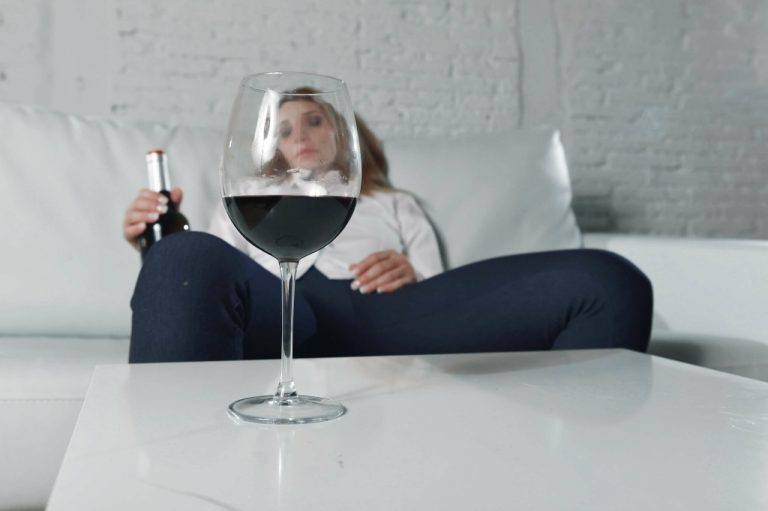A representative, but not exhaustive, list of reported visual disturbances. A 2021 review of HPPD suggests certain medications may help treat HPPD, but those studies are limited. Antiseizure and epilepsy medications like clonazepam (Klonopin) and lamotrigine (Lamictal) are sometimes prescribed. If you experience unexplained hallucinations, it’s important to see a doctor. The doctor may perform an examination, obtain laboratory tests, and take an image of your brain. While these symptoms are reported, the https://samskrutisot.com/nizampet/healthy-coping-mechanisms-for-stress-difficult/ Diagnostic and Statistical Manual of Mental Disorders, Fifth Edition (DSM-5) does not include them on the recognized list of symptoms.
- California Care Recovery provides comprehensive heroin rehab services in Mission Viejo, California, focusing on detox and inpatient treatment to facilitate recovery.
- However, there was a complete cessation of all substance use for seven months at his admission.
- Yet we know little about its risk factors and causes, lack optimal treatments, and the majority of clinicians are unaware that HPPD even exists.
- At variance with DSM-IV-R, ICD-10 recognizes hallucinogen-induced visual disturbances as lasting only seconds to minutes.
- Nor is HPPD caused by a “bad trip.” These are all common beliefs about HPPD that are not true.
Personal tools
Tracers and trailing phenomena appear to be the most resistant symptoms. Concomitant coexisting psychiatric disorders can represent a further clinical Oxford House challenge, with the clinical construct of the lysergic psychoma as a possible heuristic model. Of course, when the psychoma is strong and repeated in its nature, the possibility to determine a full-blown psychosis may become more concrete 93,94. Type-1 HPPD is characterized by non-distressing flashbacks that may appear days or months after using hallucinogens and may feel pleasurable or controllable. Type-2 HPPD involves visual abnormalities, like haloes or trails, that are pervasive, unpleasurable, and make someone feel anxious or disturbed.
The Perception Restoration Foundation
The range of case-specific variables may extend from learning and kindling effects, individual reaction patterns to mental trauma and weak self esteem to other psychophysic vulnerabilities Hermle et al. 2008. Additionally, only a small spectrum of hallucinogens seem capable of eliciting flashbacks, with LSD being the leading causative agent. Closely related to LSD in its psychotropic actions is psilocybin, which produces similar but shorter-lasting intoxications. Interestingly, there is only one documented case of HPPD following ingestion of Psilocybe semilanceata mushrooms in the psychiatric literature, despite its common use in the hippie subculture of the 1960s and 1970s Espiard et al. 2005. The incidence of mental disorders in 200 Native Americans of the Navajo tribe after ritual use of mescaline was the subject of a recent study by Halpern Halpern, 2003.
If you are experiencing persistent visual disturbances after using hallucinogens, it’s important to seek medical help for proper evaluation and management. Consulting with a healthcare provider can provide you with the support and guidance needed to navigate this challenging condition. Two types of HPPD have been proposed here, accordingly to Lev-Ran (40).
Health Conditions
This distinction helps medical professionals differentiate HPPD from other drug-related conditions and guides appropriate treatment approaches. Long-term recovery from HPPD means taking medications that can ease the experience of pseudo flashbacks and engaging in a lifestyle plan that supports mental health and wellness. Though there are cases that have reported a reduction or disappearance of symptoms after using the above drugs and others, there are often cases that support the use of one drug followed by another case study where the drug worsened symptoms.
5. First-Line Medications
The main mechanism supposed to be implicated consists of a vulnerability/predisposition of psychedelics’ consumers to continue centrally processing visual imagery after the visualization has been totally eradicated from the visual field (23). Persisting visual disorders may be explained by a reversible (or irreversible) “dysfunction” in the cortical serotonergic inhibitory inter-neurons with GABA-ergic outputs (63). The anandamidergic system has been also implicated by involving the areas of visual information processing (64, 65).

Hallucinogen Persisting Perception Disorder Diagnosis
The complex nature of perceptual disturbances demands thorough evaluation through specialized assessments and neurological examinations. It’s worth noting that some individuals may also experience co-occurring mental health disorders, such as Borderline Personality Disorder, which can further complicate their overall mental health landscape. Per Psychology Today, HPPD is a cognitive disorder in which people continue to experience hallucinations they first experienced while under the influence of a substance.
Ever had those weird little specks or squiggly lines drifting around in your vision, only … Visual Snow Initiative founder Sierra Domb reviews progress in the understanding of Visual Snow, new studies as well as new additions to the Visual Snow Initiative website. Being prepared as much as possible for how you’ll respond to HPPD symptoms could be helpful, especially with more intense episodes. Emotional symptoms could also be present, which might confuse or frighten you. Lauren Smith has worked as a journalist and copywriter for the last decade, covering a range of topics including health, energy, and technology in the US and UK.
- As for her personality, the patient’s self esteem deteriorated even further during the 18-month observation period whereas obsessive–compulsive and anti-social traits receded.
- With the weighted scoring system of the MAQ-HPPD, publications could attain a maximum quality score of 12.
- The condition is most frequently reported among young adults who use hallucinogens recreationally, though it can affect individuals of any age.
- Rarely, MDD may include hallucinations, but these are typically tied to feelings of guilt or worthlessness, unlike the visual distortions seen in HPPD.
However, this may reflect a lack of evidence-based treatments for both conditions (35). The similar presentations and lack of supportive investigations HPPD and VSS again emphasized the need for detailed history-taking in patients with unexplained visual symptoms. The two syndromes should be differentiated so that patients with HPPD can be appropriately counseled on avoiding potential triggering substances. Data was collected on visual symptoms, illicit drug(s) used prior to symptom onset, visual examination findings, neurologic and ophthalmologic investigations, treatment and recovery. Twenty-four visual symptoms were specified based on DSM-5 HPPD diagnostic criteria (3) and a summary of common symptoms from a comprehensive systematic literature review by Martinotti et al. (2).

Learn about HPPD
Hallucinogenic persisting perception disorder is characterized by the recurrence of visual phenomena caused by psychedelic drugs for days, months, or even years after the trip. In mild forms of the disorder (HPPD Type I), these visual disturbances are transient, while in more severe cases (Type II), they’re pervasive and seemingly irreversible and cause impairment and distress. Sometimes, these visual disturbances are triggered by stress or anxiety. HPPD as defined in DSM-IV-R is a post- hallucinogen intoxication disorder encompassing a range of mostly visual perceptual disturbances that occur within a certain time frame after cessation of drug use. The definition of this disease entity is entirely based on studies involving chronic hppd LSD users Abraham, 1982, 1983. However, any additional psychopathological symptoms that may have occurred in this patient population were not given any consideration.
Research suggests that using hallucinogens 15 or more times is a risk factor for developing the disorder. If you’ve been diagnosed with HPPD or suspect you might be experiencing it, it’s important to find a knowledgeable clinician who can provide the right treatment. Dr. Locke’s comprehensive approach involves understanding your symptoms, addressing any co-occurring anxiety or depression, and creating a treatment plan to help you manage your condition effectively. Signs of HPPD include visual disturbances like seeing halos or trails, as well as emotional changes and anxiety. While the path to managing HPPD can be challenging, combining therapy, medication, alternative treatment options, and self-care may help individuals navigate their symptoms, reduce distress, and enhance their overall quality of life. Visual symptoms alone don’t confirm HPPD – practitioners need to rule out neurological conditions, eye disorders, and other psychiatric diagnoses.
- Benzodiazepines such as Xanax showed the highest success rate, with 58% of those who took them reporting that their symptoms improved.
- Given the limited literature about HPPD, a possible hypothesis about the pharmacotherapy of choice in relation to different etiologies has not been considered.
- Some reports state flashbacks occur due to how a person’s nervous system reacts to using hallucinogens.
- If your doctor suspects another possible cause, such as side effects of a medication, they may request blood tests or imaging tests.
Hallucinogens are among the oldest known classes of medications used for their ability to change perception and mood. They can be found in plants and fungi or can be synthetically manufactured. These drugs affect the body, producing sympathomimetic effects such as hypertension, mydriasis, and hypertension, and can frequently cause nausea and vomiting. Some of the most crucial side effects affect the mind, producing perceptual distortions. Although any hallucinogen can cause the symptoms, LSD seems to be the main trigger for developing HPPD. Individuals with a history of using hallucinogens are 4.0% to 4.5% more likely to develop HPPD, and there is no connection between the amount of drug consumed and the likelihood of HPPD 6.





